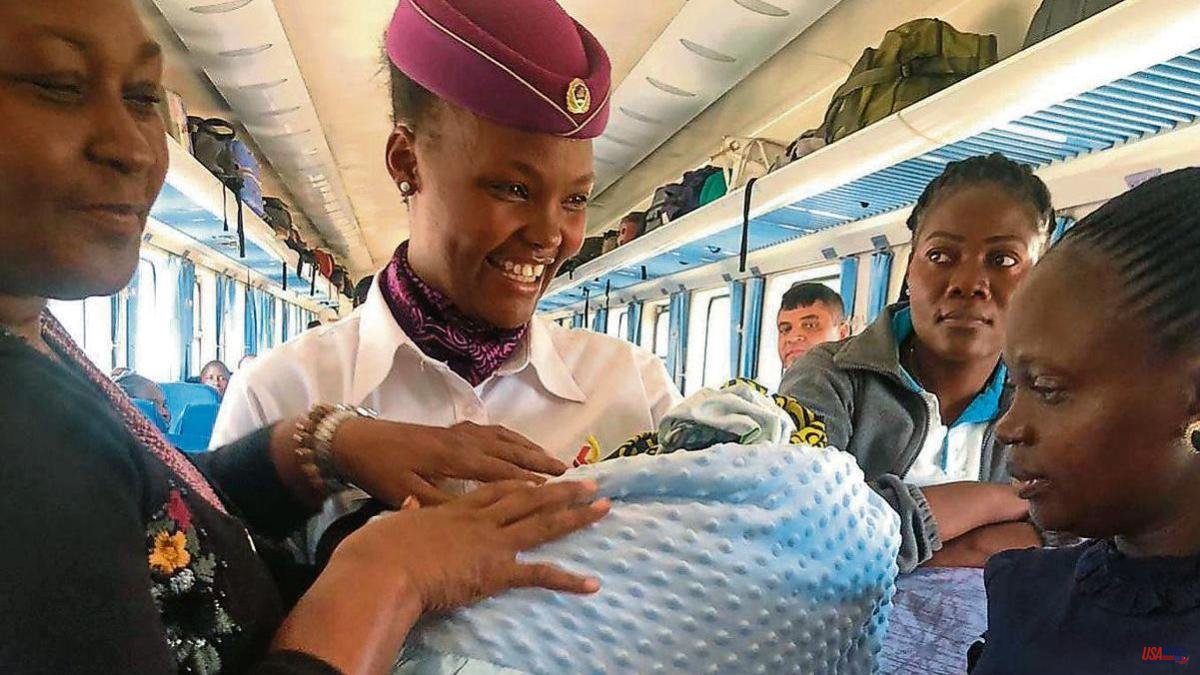In 1896, the British Empire began building a railway line to link the coast from Mombasa to Lake Victoria to facilitate trade in its nascent colony in East Africa. This monumental and distant project was such a complicated and expensive undertaking from London – its construction experienced numerous adversities, such as clashes with local people or the attack of two lions, known as the man-eaters of Tsavo –, that members of the opposition in the British Parliament dubbed this railway "the lunatic train".
That journey of more than fifteen hours on an aging train, which over the years became a journey with a certain romanticism, gave way more than five years ago to a modern high-speed service to cover the distance between the capital , Nairobi, and Mombasa: the SGR Madaraka Express. The service is part of the Standard Gauge Railway (SGR), Kenya's largest infrastructure project since independence from Britain in 1963.
This new train, with comfortable carriages, with air conditioning and which covers the distance between the two main Kenyan cities in less than six hours, witnessed ten days ago an arrival in the world at high speed. On June 21, when the Madaraka ('freedom', in Swahili) train was approaching its destination, a woman broke her water and went into labor. Luckily, among the passengers was Dr. Indanyenyi Luseso, who presided over the birth assisted by a nurse from the Kenyatta National Hospital, Fauziya Lugogo, and the passenger's assistant, Mary Nyiha. The determined performance of all three allowed for a happy ending.
The official account of the Kenyan railway company, which shared several photos of the moment, announced the good news on social networks with a generous touch of syrup. "We are delighted to be able to share the touching story of a mother who welcomed her bundle of joy on board the Madaraka Express train to Mombasa."
After the incident, Kenya Railways confirmed that both were fine. "The mother and her child were later transferred to the Mariakani hospital to receive medical assistance. Both are well and we wish them the best", the transport company published in a statement.
In Spain, a 27-year-old Senegalese woman became in 2008 the first woman to give birth in an AVE, as Renfe itself reported at the time. The woman, who was traveling from Malaga to Madrid with her husband, was assisted by a midwife and a nurse in the cafeteria car and gave birth to a baby girl (they named her Mama Kin Ya) weighing 2.9 kilos. That time, the parents avoided unsought publicity and discreetly got off the train because they didn't have the papers in order. Yes, there were gestures of impromptu altruism: some travelers bought gifts and gave money to the family to welcome the little girl.
Sometimes, especially when the government pocket is empty, generosity is an official reaction. It happened in France and Ireland. In the first case, a woman broke her water in 2018 on a commuter train and gave birth to a child with the help of several passengers at the Auber station in the Paris district. A year later, a woman went into labor in the toilet of a Dublin train. After hearing the girl's screams, a train attendant informed the driver and asked the passengers for help. As in the cases of Kenya and Spain, bingo sounded again in the Irish carriage: among the train passage that day there was a doctor and two nurses who helped to bring a baby girl into the world.
The difference with the Kenyan and Spanish cases was the gesture of the railway authorities. Both the RATP and Iarnród Éireann, the bodies that run the train service in the two countries, announced that babies born on their trains would come into the world with a prize under their arm: free tickets up to the age of 25.













